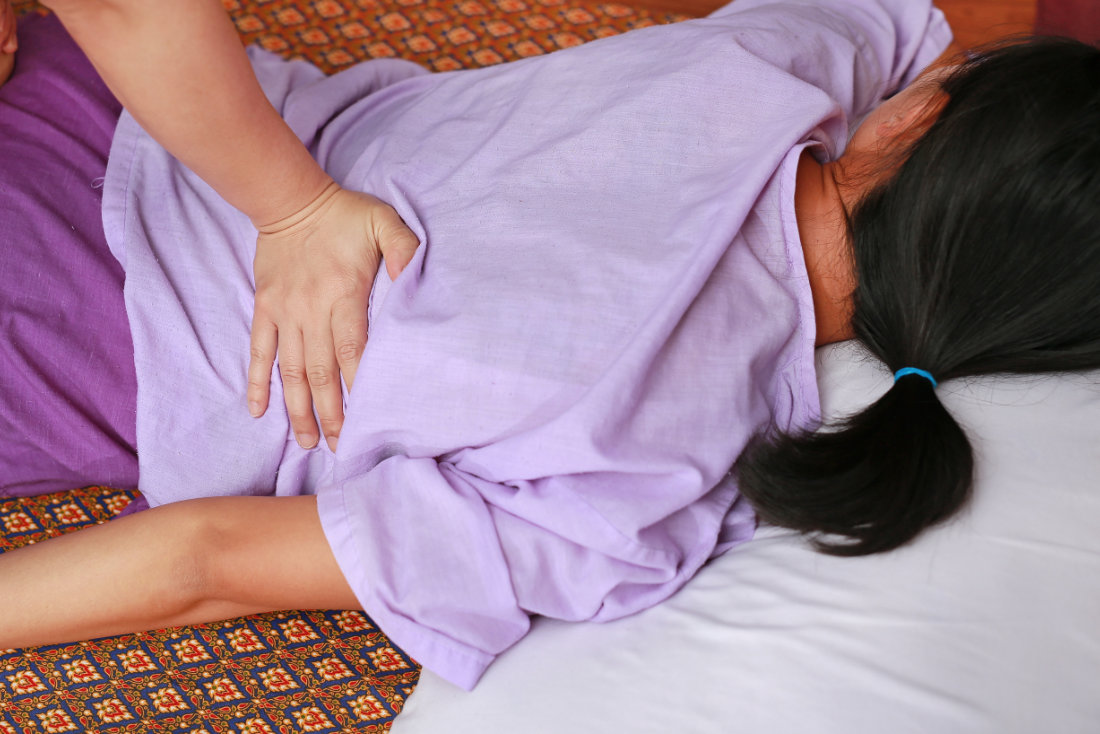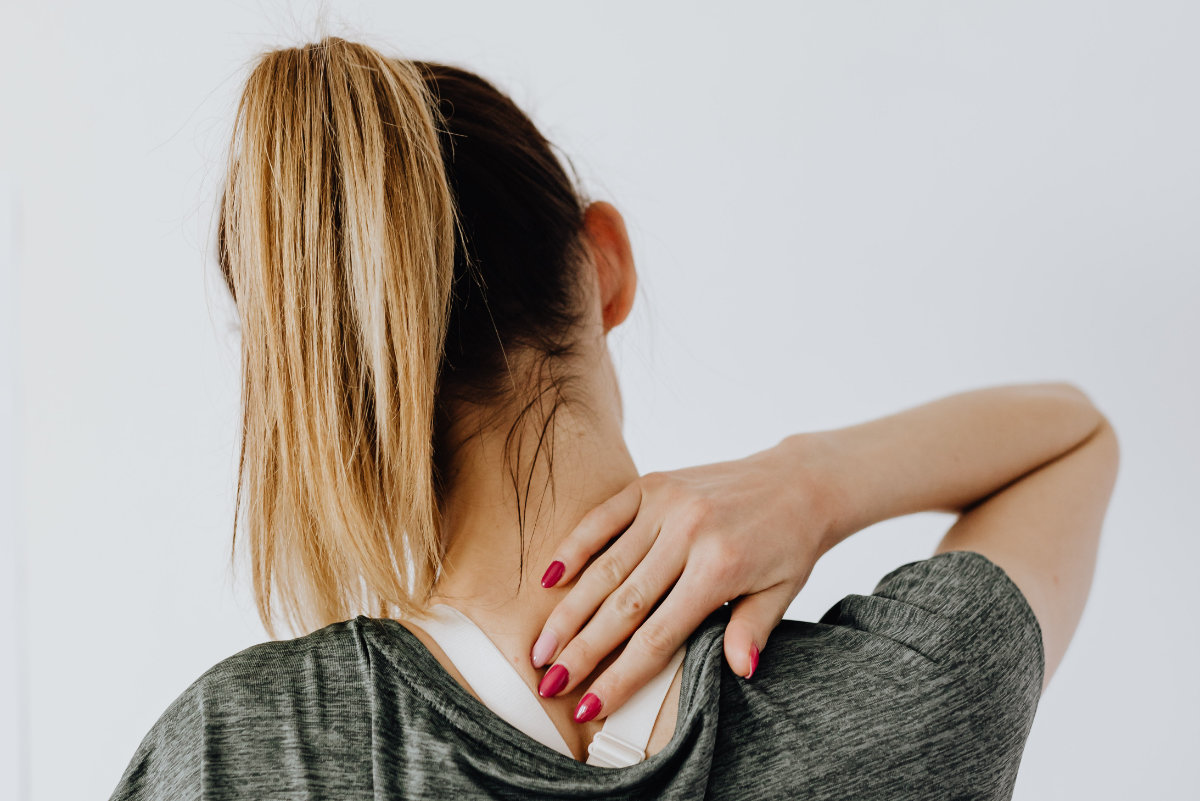Thai Massage - what to expect?
The main purpose of the traditional Thai massage is to achieve a therapeutic, rather than relaxing effect. This is a clothed massage, so it shouldn’t be a cause for embarrassment. Before the massage, you will get a special loose and comfortable shirt and trousers to change into.
During the massage you can expect stretching, pressing and rocking in the hands of your Thai therapist, similar to yoga poses. In classic Thai massage, therapists use many parts of their body, including their thumbs, elbows and knees. If you like a really strong massage, the masseuse can also walk on you – this is also part of a traditional massage. Thai massage is therefore not the most delicate massage, and in the opinion of some people, it may seem at times an unpleasant or even painful experience. If it is too strong for you, tell your therapist who will adjust the pressure level.
After the massage, drink something warm – in the Nattakan Salon it will be a ginger drink. Cold water causes the body to contract in response to the cold and tighten the muscles that have just been relaxed. This may cause cramps. If you want to rest or take a nap after the massage – do it! Think of massage as an intense workout. If your body tells you it’s time to rest, repair and regenerate – it’s worth to listen!
While there are no contraindications to massage as often as you want, if you use it to relieve pain, do not do it every day. Give your muscles time to rest and monitor the progress. The effects of Thai massage last longer than the effects of other massages, but the regeneration time is very individual and different for each person. Find your own personal rhythm and adjust the schedule of your massage visits to it.
Also, consider going together with someone who is close to you – it could be your partner, friend, or even your teenage kid, especially if you think they spend too much time on the computer. Everyday rush means that we spend less and less time on joint activities building relationships. A joint massage can become the beginning of a common hobby or a weekly ritual during which you will cut yourselves off from everyday worries and responsibilities for a moment and together you’ll enjoy the moment, here and now.

The benefits of Thai massage
It lowers the stress level
Under the influence of prolonged stress, the susceptibility to colds and inflammation increases. Stress can also cause hair loss, increased graying, skin problems, muscle aches, insomnia, loss of appetite, impaired concentration, and mood swings.
Thai massage allows you to reduce the stress level in two ways. Firstly, it’s time for you only. Thanks to this, you can break away from all external stimuli and concentrate only on yourself and your body. Secondly, physical manipulation of body tissues reduces muscle tension, which is interpreted by the brain as a transition from an emergency to a safe situation.
A 2015 study confirmed experimentally that traditional Thai massage reduces the level of alpha-amylase in saliva – one of the markers of stress. Another 2005 study found a significant decrease in cortisol levels (an average of 31%) and the activation of neurotransmitters called “happiness hormones”: serotonin (an increase of 28%) and dopamine (an increase of 31%).
It gives relief to the back and spine
Overload, microtraumas, stress, too little or no physical activity, a sedentary lifestyle causes many adverse changes in the muscles of the back and spine. When sitting, we burden the spine almost twice as much as when standing. Additionally, the lack of exercise weakens the muscles and ligaments that keep the spine in the correct position. Spine problems are most often signalled by pain in the area of the lower back, neck, shoulders and upper back. Often there are also so-called “trigger points” are small, sensitive areas that, when exposed to pressure, cause tenderness or pain.
Traditional Thai massage helps to overcome many of these ailments, which has been confirmed in many studies. In a 2011 study, Thai massage was indicated as an alternative method of treating hypersensitivity to the above-mentioned trigger points, as well as a method that affects the heart rate and reduces the stress level. Other studies confirmed the therapeutic effect of Thai massage on the scapulocostal syndrome, non-specific back pain and joint mobilization, and the treatment of chronic pain.

Thai Massage helps with headaches
In most cases, headaches are tension-related and directly related to neck tension, stress, and sleep deprivation. When working at the computer, we tend to stoop, lean forward, clench our jaws, and tighten our facial muscles. We also unconsciously cause hypoxia, associated with improper breathing. While sitting, we involuntarily tighten the abdominal muscles, making the inhale and exhale incomplete.
Massage directly relieves the tension of the muscles of the face, neck and abdomen and lowers the general level of stress, bringing quick relief to our head. The therapeutic effect of Thai massage in the treatment of tension headaches was confirmed by a 2015 scientific study.
It improves the quality of sleep
Sleep is one of the basic physiological needs. If it is not satisfied, it leads to malaise, problems with concentration and a slow reaction to stimuli.
Massage helps to regulate the level of hormones, including those responsible for sleep, and the reduced level of stress and increased activity of our parasympathetic nervous system (i.e. the one that is responsible for relaxation, regeneration and sleep quality) helps to fall asleep and maintain a healthy sleep, which was confirmed in the study from 2013. Also, a 2002 study confirms the improvement of sleep quality thanks to massage, which not only improves its quality, but also relieves symptoms related to fibromyalgia, a disease that causes a person to wake up exhausted, stiff and sore.
It improves skin condition, regenerates and adds energy
The rhythmic pressure of the body improves lymph flow and blood microcirculation, which visibly oxygenates and improves the condition of the skin. A massage targeted at parts of the body with cellulite can help break down fat and improve the appearance of the skin after just a few months, as confirmed in a 1997 study.
One of the conclusions of the 2018 study was that massage accelerates muscle regeneration after intense training, reduces the level of inflammatory markers and the level of keratin kinase. Another 2015 study indicates that reflexology may have a positive effect on peripheral neuropathies.
Thai massage rejuvenates and gives energy to a greater extent than, for example the Swedish one, which was the subject of a comparative study from 2018.
Contraindications
Due to the influence of Thai massage on the circulatory system, it is necessary to consult a doctor first if you have one of the following conditions:
- coronary artery disease
- obstruction of the lymphatic system
- thrombosis
- varicose veins
- heart disease
- high blood pressure
- diabetes
- neurological disease
- osteoporosis
- joints laxity (Ehlers-Danlos syndrome)
- you are shortly after surgery
- you are just after chemo or radiation therapy
Additionally:
- Do not try massage if you have symptoms of dermatitis, as it is easy to spread the virus to other areas of the body and infect the masseuse.
- Massage should not be performed directly over inflammation of the skin, bruises, lumps, unhealed wounds, abdominal hernia or areas of recent fractures. This can delay healing, cause increased inflammation, or other complications.
- A fever above 38 degrees Celsius is also a serious contraindication to massage, because at this temperature the muscles are more easily damaged.
- If you suffer from cancer, avoid massaging the affected areas as the cancer may spread to other organs.
- Pregnant women should not have massages during the first trimester. If you experience back pain after the first 3 months, you can get a massage, but notify the therapist who will modify the massage technique by doing a massage on your side.
